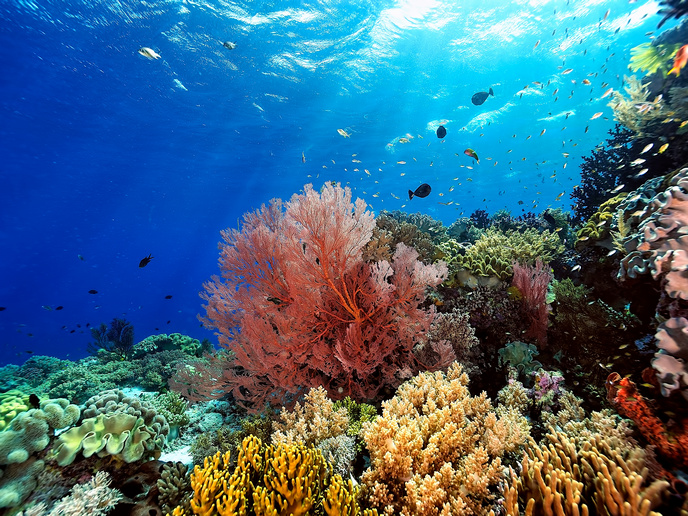The path towards new photonic materials starts underwater
As the world looks to wean itself from fossil fuels, a key question remains: how can we efficiently turn renewable resources into renewable energy? To answer this question, scientists with the EU-funded BEEP project(opens in new window) turned to the natural world. “Our goal was to understand how those organisms that use light as their energy source maximise the amount of solar energy they absorb, store, and convert,” says Silvia Vignolini(opens in new window), a professor and physicist at the University of Cambridge(opens in new window). With this information in hand, the project, which received support from the Marie Skłodowska-Curie Actions programme(opens in new window), hoped to open the door to developing innovative new photonic materials and technologies capable of optimising the harvesting and storing of solar energy.
Stunning strategies for harvesting light
Diving into the topic, the project team, which included nine early-stage researchers, started by looking at examples from the marine world. Specifically, they looked at various corals, microalgae, seaweeds, and sea slugs that have evolved to maximise photosynthesis in a limited space while also avoiding excessive exposure to sunlight. “These organisms have developed stunning strategies for the efficient harvesting of light and protection with their compact and highly pigmented spatial structures,” explains Vignolini. “They’ve also adapted to operate over a range of habitats and different light regimes.”
A colourful advantage
One of these strategies is structural colour. “Marine life is populated by a huge diversity of organisms with an incredible range of colour, with the brightest colours often being obtained by the way light interacts with ordered nanostructured materials,” adds Vignolini. BEEP project researchers showed that this colour is more than just pretty, but that it plays an important biological role. For example, in the red algae Irish moss, the organism’s structural colour serves as a photoprotective mechanism. “We demonstrated that the blue iridescent colour on the tips of its fronds attenuates more energetic light.” remarks Vignolini. “At the same time, the organism favours green and red light harvesting through its external antennae, which possess an intensity-dependent photoprotection mechanism.” The project also studied the photonic and structural properties of other algae species. This work led to the characterisation of stunning cellular structures that have never been described before.
Turning research into better-performing biomimetic materials and systems
The project has already translated some of its research into practical solutions. For example, researchers developed iridescent bacteria biofilms and converted them into photonic pigments for material applications – a promising result that could lead to the development of sustainable alternatives to the conventional paints and toxic dyes used today. But this is just the tip of the iceberg. “I am confident that our research will pave the way towards better-performing biomimetic materials and systems, including bio-photoreactors for the sustainable production of biomass and energy.” concludes Vignolini.







